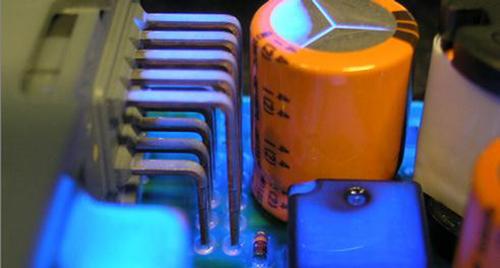Increasing Electronics Reliability With Conformal Coatings
March 11, 2013

The increasing value that consumers place on their electronic devices has heightened awareness of those devices' reliability. It has also spurred a greater emphasis on, and demand for, protecting these electronics against possible damage from environmental factors.
This demand, in turn, is driving unprecedented growth and breadth in the use of conformal coatings. More types of applications are moving to the use of coatings, and more coatings are being used within a given application segment. For example, more types of smartphones now use coatings.
Conformal coatings are designed to electrically insulate circuit boards, and isolate their components from damage caused by debris and water. The protection they provide helps prevent conductor corrosion, dendritic growth, and electrical crosstalk. Ultimately, that protection can prevent the device failures that may result from such damage.

How much salt water exposure can your electronic devices withstand? Those who recently lived through a hurricane have been finding out the answer to that question. Unprotected copper traces, wires, and components do not get along very well with salt water. Corroded electronics are not especially welcome in a weather emergency, nor in our everyday work and life. Yet, reliability may never be considered strongly enough until it's really needed, or when it's missed.
Although modern electronic devices and components can withstand a lot of abuse, they are not indestructible. Great effort is taken in their design and manufacture to provide suitable durability. However, full testing of durability can typically occur only after a design or build qualification process is already well underway. It's not uncommon that, at the final hour during durability testing, problems may be revealed that require unexpected and unplanned strategies to protect electronics from the environment.
The changes that must then result from these new requirements must be made to work around existing designs and manufacturing processes that are already in place, while also minimizing any cost increases. But they often end up being more expensive, and likely less effective, than if such protection had been factored into the design of a device right from the start.
Environmental protection strategies often involve trade-offs among performance, perceived value, and cost. Added circuitry and component protection can enhance customer satisfaction and the value of a device, but they may not always justify a higher price to the purchaser.
Although many different materials have been used in the past for conformal coatings, three main types dominate for use with electronics. These are acrylics, urethanes, and silicones. Each has its own advantages and limitations.
Acrylics (sometimes abbreviated as "AR") are often inexpensive and easy to apply. They provide a hard, tough coating that is relatively easy to repair. However, they have a narrow useful temperature range and are typically supplied in the form of solvents. Some of these solvents can pose handling, safety, and environmental challenges. Acrylics generally do not have a cure mechanism; instead, solvent evaporation dries the film.
About the Author(s)
You May Also Like





